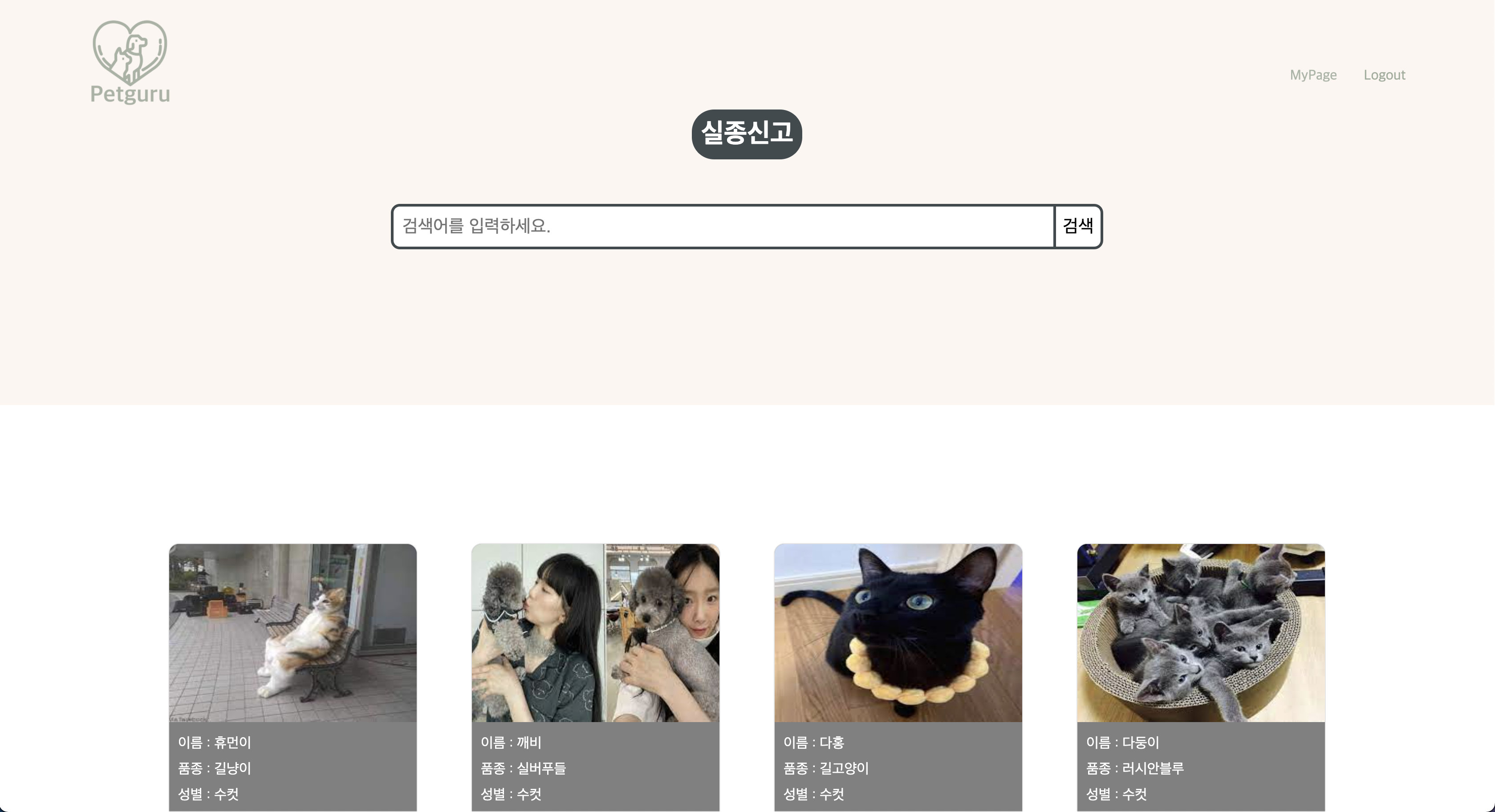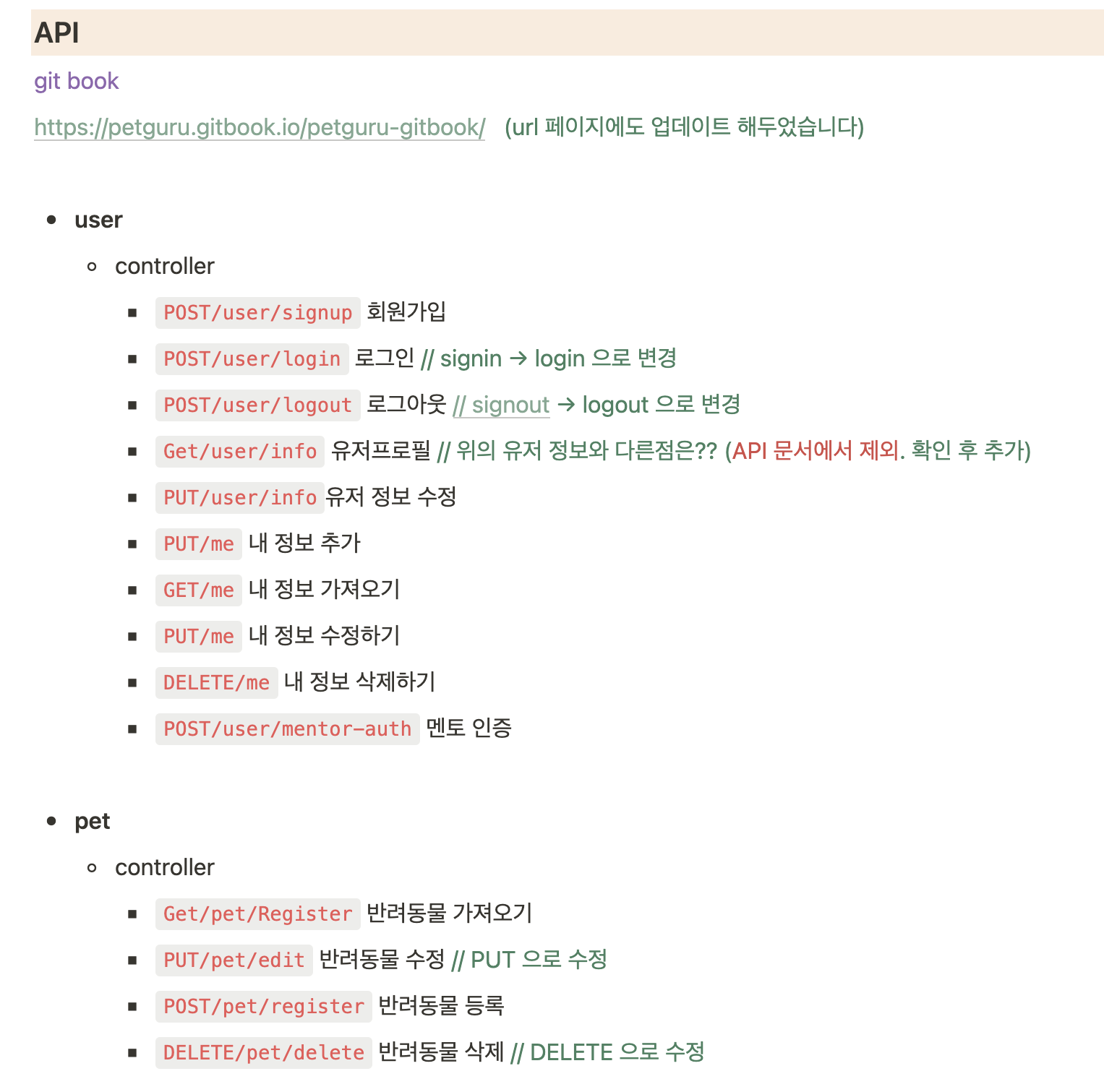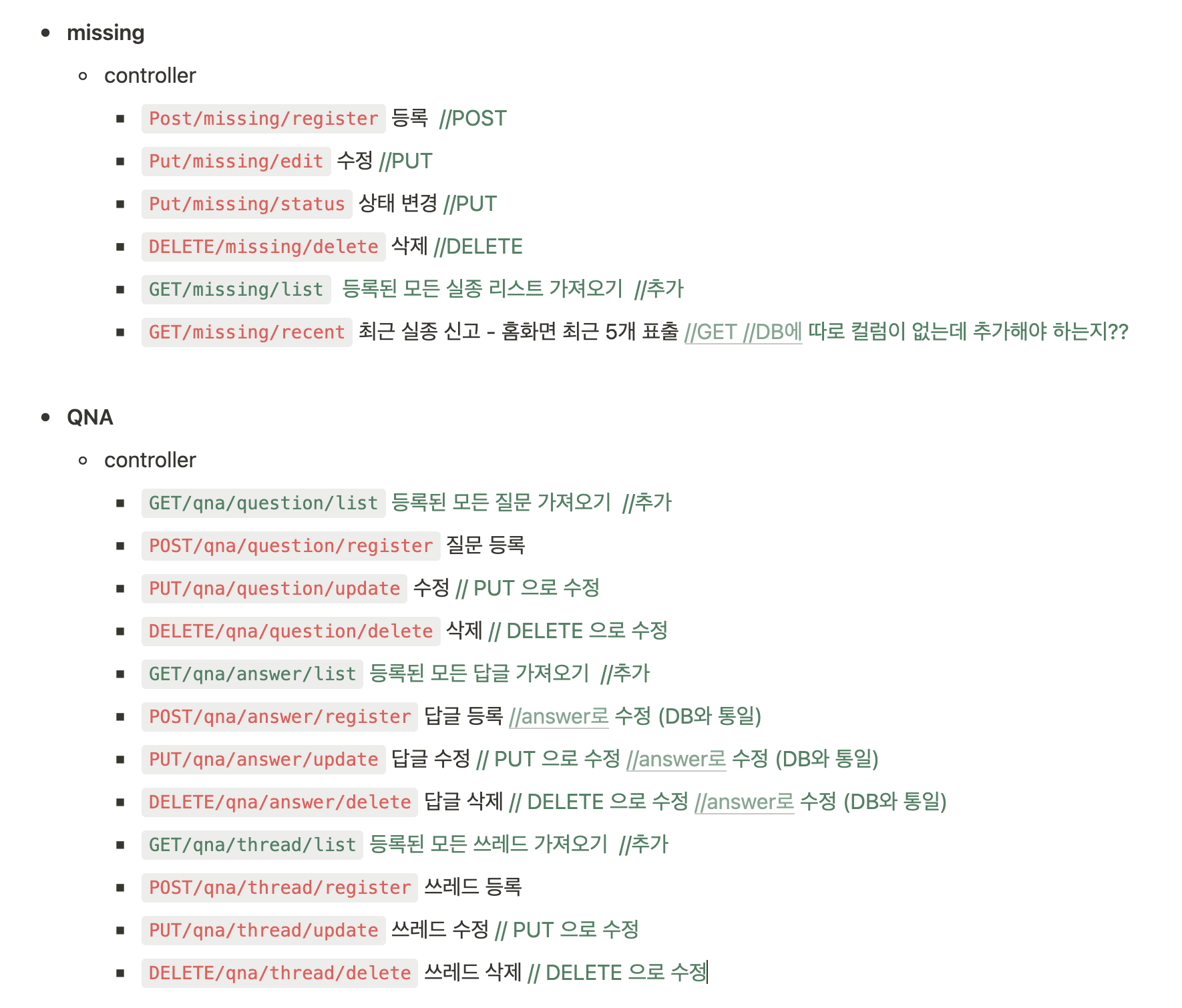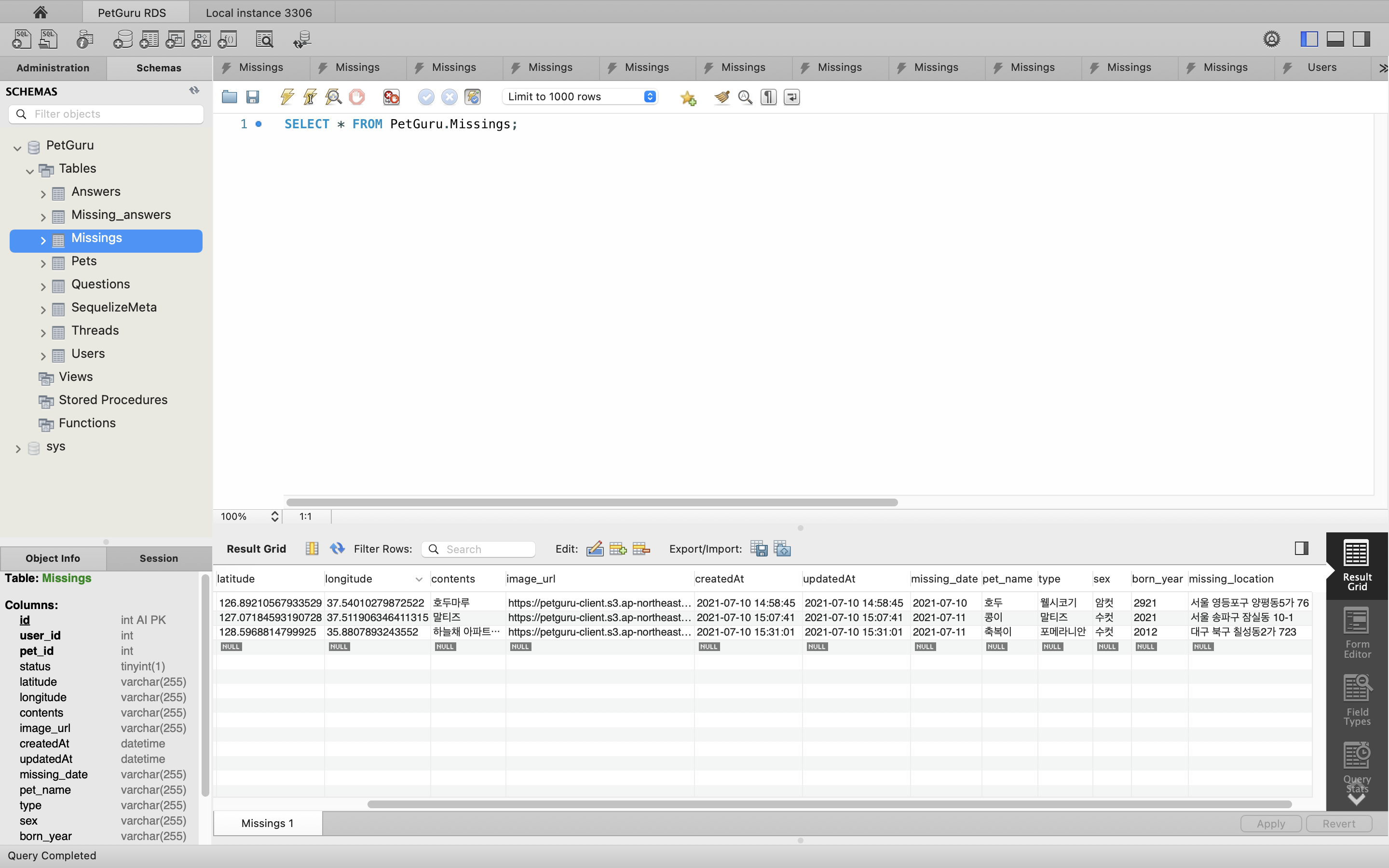Looking Back the PetGuru project

This was the second group project I experienced in the CodeStates bootcamp. In this project, I worked with 3 other teammates, and participated as the Back-end web developer. During the 6 weeks, our team worked as a group and went through all the process from the service planning to the website building. Below are the things I felt while going through this first group project.
Contribution
- Position: Back-end
- Stacks Used: Node.js, Express.js, MySQL, AWS EC2, AWS RDS, SequleizeORM, JWT, pm2, multer, multer-S3
[ Team Collaboration (SR) ]
- Came up with Service ideas
- Selected the Development Concepts for the Service
- Created Flow chart and Wire Frame using Miro & Figma
[ DATABASE ]
- DB Diagram Schema Design
- Designed Database Schema using DB Diagram
- MySQL Database Build up
- Built MySQL Database using Sequelize ORM
- Created Database Model Association
- Created & Maintained RDS DB instance
[ API ]
- Server API endpoint Design
- Designed API endpoint
- Created API Document using Gitbook
- Built routers in Express framework of NodeJS
- Response Build up for each API endpoints
- Pet(pet information) CRUD
- Missing(missing pet post) CUD
- Missing_answer(issing pet post reply) CRUD
[ Image Upload ]
- MULTER & MULTER-S3
- Saved the image data from Client to AWS S3 using MULTER-S3
- Provided Client the S3 image link
[ AWS Deployment ]
- Deployment & Server Management using AWS
- AWS EC2
- AWS RDS
- pm2
Server endpoint API Design
In this project, I had an opportunity to design whole API endpoints & responses for the each endpoints. It was a challenge for me, especially since I had to come up with all the possible endpoints that would be needed in the website BEFORE building the website. So, I had to use my imagination and rely on the Wireframes and Flowcharts we created in the planning stage.
In order to do this, me and another Back-end developer (we had 2 Back-end developers including me in this project) first came up with basic endpoints we thought we might need and left notes on the points that might need update. Then, we discussed about those points and edited them as we proceeded. Below is how we worked on this API endpoint design in Notion:


Once we finished listing possible endpoints, I created API Document using Gitbook. In this process, I could learn about HTTP Status Code used in API responses. Below are some of the frequently used HTTP status codes:
[1×× Informational]
- 100 Continue
- 101 Switching Protocols
- 102 Processing
[2×× Success]
- 200 OK
- 201 Created
- 202 Accepted
- 204 No Content
[3×× Redirection]
- 300 Multiple Choices
- 301 Moved Permanently
- 302 Found
- 303 See Other
- 304 Not Modified
- 305 Use Proxy
- 307 Temporary Redirect
- 308 Permanent Redirect
[4×× Client Error]
- 400 Bad Request
- 401 Unauthorized
- 403 Forbidden
- 404 Not Found
- 409 Conflict
[5×× Server Error]
- 500 Internal Server Error
- 503 Service Unavailable
- 504 Gateway Timeout
- 505 HTTP Version Not Supported
- 511 Network Authentication Required
- 599 Network Connect Timeout Error
After this, I created API endpointes and built responses for each endpoints using routers in Express framework. Then we tested the request & responses using Postman. This stage went rather smoothly, especially since I already planned & designed all API endpoints and responses in the API Document. I felt the importance of planning & creating appropriate API Documents in the planning stage.
MySQL Database Build up
In this project, I built relational database using MySQL. At first, I created Model & did migration using Sequelize in the terminal. After that I created Modeal association and connected each Database Models since this was relational database. For example, User table and Pet table has 1:N relationship, and this could be created with below code:
db.User.hasMany(db.Pet,{
foreignKey: 'user_id',
sourceKey: 'id'
});
db.Pet.belongsTo(db.User,{
foreignKey: 'user_id',
targetKey: 'id'
});
Also, I made the sequelize to sync if Database is modified by adding below code:
db.sequelize.sync({
alter : true
})
In order to check whether the data went into the database successfully, I used MySQL Workbench. With this app I could see the table visually, and it helped me a lot especially in testing process.

Table example:

Multer & Multer-S3 Image uploader
In order to implement the image uploader, I used Multer and Multer-S3 library. At first, I created a folder for saving the images in the Amazon S3 server. If an image is uploaded on the Front-end, our server uses Multer to upload the image to Amazon S3 server. Then, it fetches the url to access the uploaded image from Amazon S3 server. This url is saved in the database, and then also sent to the Front-end in the response string. Client will be able to display the image using the url received from the server.
const s3 = new AWS.S3({
accessKeyId: process.env.KEYID, //Caution
secretAccessKey: process.env.KEY, //Caution
region: process.env.REGION, //Caution
});
const upload = multer({
storage: multerS3({
s3: s3,
bucket: 'petguru-client',
contentType: multerS3.AUTO_CONTENT_TYPE,
acl: 'bucket-owner-full-control',
metadata: function (req, file, cb) {
cb(null, { fieldName: file.fieldname })
},
key: function (req, file, cb) {
cb(null, `uploads/${Date.now()}_${file.originalname}`)
},
}),
})
In the above code, you can see that the Access Key Id, Secret Access Key and Region is being handled with dotenv. Since these information should not be openly shared, I handled this information as environment variable using dotenv.
Resizing the Project
As project deadline approached, we realized we are behind the schedule and we need to resize the project. After a thoughtful discussion, our team decided to get rid of the Q&A page, reply feature and changing the Missing Pets view mode (list & map view). It was pretty rough decision, considering how passionate we were when we planned the service at first. However, I felt like it was a necessary decision, and glad that we could discuss about project resizing before it is too late (as it was in my first project). With this resizing, we could focus on what is necessary and finish the project on time.
Learning from the Teammates
Since I learned the importance of communication and teamwork from my first project, I took extra care to have good communication and teamwork in this project. It was pretty successful this time, although there were some happenings at the early stage of project.
When we first came up with the service ideas and development concepts in the planning stage, I mainly led the discussion by coming up with variety of ideas, listening to teammates’ opinions and making the team look at the same direction. Throughout this process, I made sure everyone understood what service we are going for and what development concept we will be having by providing visual examples and in-depth explanation. However, when we started to design the website frameworks, it turned out one of the Front-end team member understood the concept in totally different way. Since we have been having a frequent conversation and had great communication, we could find this out early and changed this as an opportunity to have everyone on the same page. This was a example of how a good communication can fix the errors before it could be too late.
Also, in this project I had an experience of pushing the teammates for the same goal. In this team, 2nd Back-end developer was very busy during the project, having a marriage ceremony and honeymoon trip. Due to his schedule, he could not participate in some of the team meetings, and this was affecting me, the Back-end team member directly. So, I had to find a way to push both of us in finishing the project the whole time, by coordinating & adjusting the works in the way we both could agree on.
Despite of some difficulties, the overall team atmosphere was very nice throughtout the project, and we had a supportive relationship between the teammates. Everyone was honest in sharing the issues and opinions with the team, and recommended & shared useful information for each other. Everyone is different and there is always a chance I have to work with someone who is not a perfect fit with me, but there is always a way if I keep in mind the good communication and teamwork. I feel like this is the biggest lesson I learned from this project.